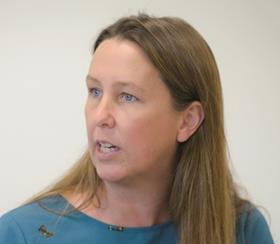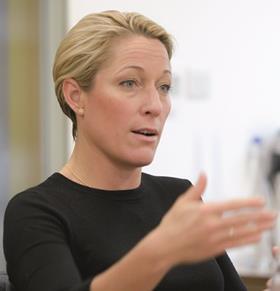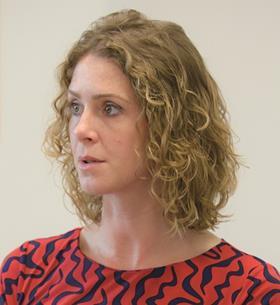Convincing the property industry to think differently about sustainability will lead to better long-term returns, claims leading panel of experts
Is the property industry tackling sustainability issues in the wrong way? Rather than looking at the benefits of introducing greener and more efficient working environments, sustainability has often been considered a necessary evil. However, delve deeper and developing or investing in buildings that people actually want to work in can, it appears, be of more financial benefit than cost.
Property Week and Capita Real Estate brought together seven of the leading experts on sustainability in the industry to tackle the topic.
First, every developer and investor is looking for the best value, so how did the panel believe sustainability can be quantified?
Dr Paul Toyne, group head of sustainability, Balfour Beatty
Sarah Ratcliffe, programme director, Better Buildings Partnership
Julie Hirigoyen, chief executive, UK Green Building Council
Ralph Wood, global sustainability and governance officer, AXA Real Estate Investment Management
Jane Wakiwaka, sustainability manager, the Crown Estate
Suzanne Roberts, head of sustainability, Capita Real Estate
Rob Bradley, consultancy director, Capita Real Estate
Chair: David Parsley, contributing editor, Property Week

Dr Paul Toyne, group head of sustainability at Balfour Beatty, kicked off the discussion. “Value in sustainable business means different things to different people, and there is a general lack of understanding in the industry on how to measure this,” he said. “As an industry, we are not good at quantifying and communicating value where known.”
Ralph Wood, global sustainability and governance officer at AXA Real Estate Investment Management, agreed with Toyne, adding: “There is pressure on investors to gain maximum returns and the yield return is the bottom line. Yes, it’s better to build environmentally friendly buildings, but there are also corporate targets to consider. There are pressures on the market, and everything has a price at the moment.
“However, one thing that is clear is that buildings considered to be at the top of the sustainability scale will sell faster when investors bring them to the market,” he said. “So, long-term investors like AXA are very aware of the value that can provide.”

Sarah Ratcliffe, programme director at the Better Buildings Partnership, claimed investors were looking for the ‘Holy Grail’, and added to Wood’s point on salability of sustainably built buildings.
“Not only will investors sell highly rated sustainable buildings more quickly, they will gain a better price,” she said. “There’s a great deal of evidence to show just that.
“This is not because buildings with sustainability ratings have higher values; it is because green is the new prime and fund managers all over the world are waking up to that,” she added. “There’s reduced obsolescence, higher rental growth, and quicker lettings and sales. There’s the value investors are looking for.”
Julie Hirigoyen, chief executive at the UK Green Building Council, added: “There’s another key value to investing in and developing sustainable buildings. Evidence confirms people who work in well-designed green buildings enjoy higher standards of health, wellbeing and productivity. It’s also the case that occupying a very sustainable building enhances a company’s brand and reputation.”
Rob Bradley, consultancy director at Capita Real Estate, echoed Hirigoyen’s thoughts. “Sustainability is driving innovation in building design and that will lead to better returns in the long term,” he said. “As an occupier, you want to house your staff in great working environments because the wellbeing of the staff improves the wellbeing of the company.”
Suzanne Roberts, head of sustainability at Capita Real Estate, also believed tenants love to do the right thing by their staff, but brought up one issue that occupiers must weigh up.

“The issue of sustainability also has its financial challenges for occupiers on buildings that are not highly rated,” she said. “They have agreed the rent, and then they are asked to contribute, via a service charge, to energy efficiency improvements before the environmental and financial savings can be achieved. The challenge we see is the pressure of the service charge where tenants are asked to fund the improvements or the landlord needs to fund the improvements themselves.
“Lack of, or limited investment therefore slows down the rate of improvement works and is a challenge often faced by investor landlords and their tenants, known as the ‘split incentive’ or ‘viscous cycle of blame’.”

As one of London’s major landlords and developers, the Crown Estate is focusing on integrating sustainability as it rejuvenates swathes of London’s West End, including the iconic Regent Street.
Jane Wakiwaka, sustainability manager at the Crown Estate, explained landlords must have a strong dialogue with tenants, and work with them to ensure they understand the benefit improving their space can make to their business.
“We have strong relationships with our customers and engage with them across a range of topics, including how they can introduce energy efficiency improvements that will ultimately lead to lower bills for them,” she said. “With new buildings we seek to adopt the principles of Soft Landings as a way to ensure optimum operational performance. We work with occupiers to provide them with the best space for staff and visitors, which is an important element of ensuring the durability of our assets.”

But it is not all good news. The panel agreed with Hirigoyen when she suggested the property industry could be heading for its ‘Volkswagen’ moment when it comes to the way energy performance is measured. “Are we actually measuring the right thing when it comes to sustainability in buildings? Many believe we are not,” she said. “EPC ratings are based on initial engineering statistics, often before the first brick has been laid. We’re not making sufficient use of operational energy performance figures. This could be a serious issue for the industry in the near future, particularly as experience suggests there are big disparities between design intent and post-completion performance. We ought to be more sophisticated in the way in which we measure the performance of our buildings across a wide range of indicators.”
Ratcliffe added another issue that can distort and undermine the sustainable credentials of a building. “When it comes to pre-let new developments, the occupiers have the building designed very much to their needs,” she said. “But that occupier could leave after their lease expires and a new occupier could come in and rip out the interior and put in their own. This can often change the whole performance of a building. So the building isn’t living up to its environmental or sustainable ratings.”

Wakiwaka explained the Crown Estate is always pushing the value of improvements to tenants’ spaces; key to this is being more ‘human’ in how we approach energy efficiency, which is as much about culture and behaviour as it is about technological innovation. This will ultimately deliver buildings that meet the needs and expectations of our tenants.
So, while there are benefits, the panel agreed the industry may have to reconsider how it measures the performance of buildings to provide real-world use ratings that better reflect how a building performs with people in it, rather than how it will perform based on initial engineering figures.
Ratcliffe, however, admitted she was concerned the data on the efficiency of a building was being too heavily leaned upon. “I’m worried about putting too much emphasis on data,” she said. “Different measures mean different things to different people. A building has to work for its occupier - especially the people who work there every day.”

Hirigoyen went so far to say: “The word ‘sustainability’ has been bastardised; perhaps we need to find a new way of explaining what we are striving for.”
Ratcliffe also claimed the entire property industry required a major education in what sustainable buildings are really all about. “We need to educate the entire industry as there is a huge amount of confusion out there,” she said. “Letting and investment agents need to know what buildings they are dealing with, and what a truly sustainable building offers potential occupiers or investors. The lack of knowledge is quite scary.”
Toyne added: “If you look at buildings in the public sector, such as the Diamond Building at Sheffield University and Girton College in Cambridge, it’s easy to see the benefit of sustainable buildings. They offer all sorts of opportunities to end users and investors alike. When you look across Europe there does appear to be a better understanding of the benefits and we need to bring that understanding to the UK.”
Bradley warned if the industry does not get on board voluntarily, it risks being forced to. “We could be looking at regulation,” he said. “Legislation to force the industry to grasp sustainability.”































2 Readers' comments